Advertisements
Advertisements
Question
Explain graphically (i) positive work with varying pressure, (ii) negative work with varying pressure, and (iii) positive work at constant pressure.
Solution
- p-V diagram showing positive work with varying pressure:
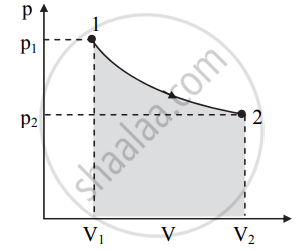
- p-V diagram showing negative work with varying pressure:
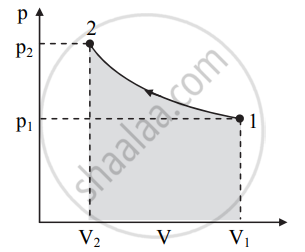
- p-V diagram showing positive work at constant pressure:
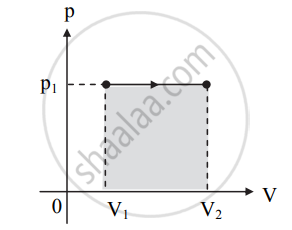
RELATED QUESTIONS
Explain why The climate of a harbour town is more temperate than that of a town in a desert at the same latitude.
A thermodynamic system is taken from an original state to an intermediate state by the linear process shown in Figure

Its volume is then reduced to the original value from E to F by an isobaric process. Calculate the total work done by the gas from D to E to F
Draw a p-V diagram showing positive work at constant pressure.
State the assumptions made for thermodynamic processes.
Explain the thermodynamics of the isochoric process.
In an isochoric process, we have ____________.
Give the equation of state for an isothermal process.
Apply first law for an isobaric process.
Draw the PV diagram for the isochoric process.
Derive the work done in an adiabatic process.
Explain the isobaric process and derive the work done in this process.
Draw the TP diagram (P-x axis, T-y axis), VT(T-x axis, V-y axis) diagram for
- Isochoric process
- Isothermal process
- Isobaric process
An ideal gas is taken in a cyclic process as shown in the figure. Calculate
- work done by the gas
- work done on the gas
- Net work done in the process

For a given ideal gas 6 × 105 J heat energy is supplied and the volume of gas is increased from 4 m3 to 6 m3 at atmospheric pressure. Calculate
- the work done by the gas
- change in internal energy of the gas
- graph this process in PV and TV diagram
A thermodynamic system undergoes cyclic process ABCDA as shown in the figure. The work done by the system is ______

Among the amount of heat absorbed and the amount of work done by a system, ______
An ideal gas is expanded isothermally from volume V1 to volume V2 and then compressed adiabatically to original volume V1. If the initial pressure is P1, the final pressure is P3 and net work done is W, then ____________.
One mole of an ideal gas with `gamma` = 1.4 is adiabatically compressed so that its temperature rises from 27° C to 47° C. The change in the internal energy of the gas is (R = 8.3 J/mol.K) ____________.
Two identical samples of a gas are allowed to expand (i) isothermally (ii) adiabatically. Work done is ____________.
For an isothermal expansion of a perfect gas, the value of `(Delta "P")/"P"` is equal to ____________.
We consider a thermodynamic system. If `Delta"U"` represents the increase in its internal energy and W the work done by the system, which of the following statements is true?
Which of the following processes is reversible?
Consider P-V diagram for an ideal gas shown in figure.
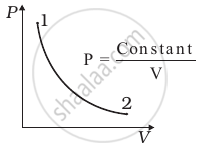
Out of the following diagrams (figure), which represents the T-P diagram?
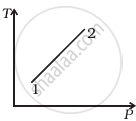 (i) |
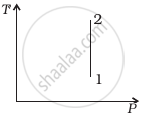 (ii) |
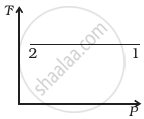 (iii) |
 (iv) |
Give any two types of a thermodynamic process.
In the figure shown here, the work done in the process ACBA is ______.
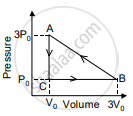
Explain how can a gas be expanded at constant temperature.
